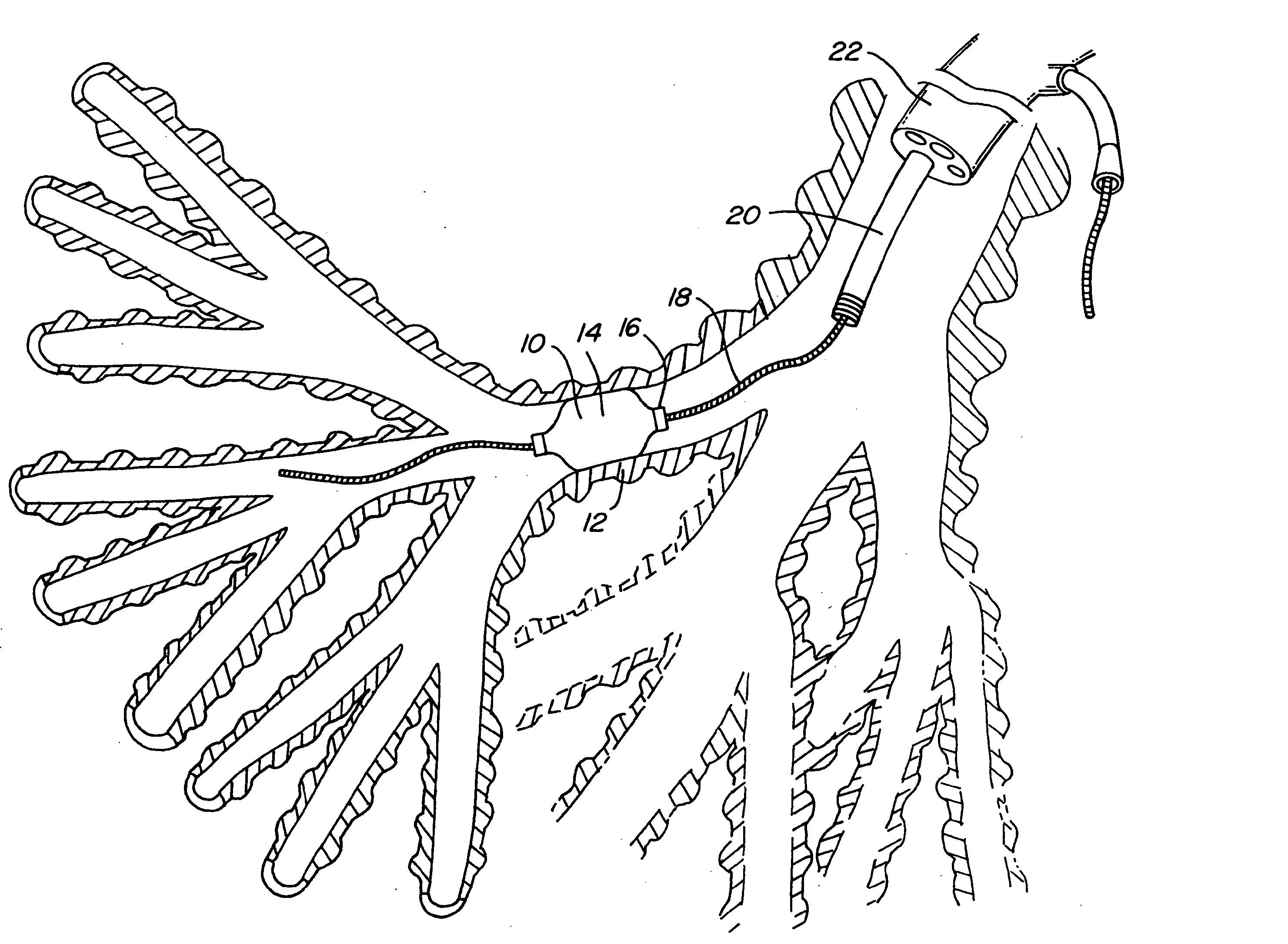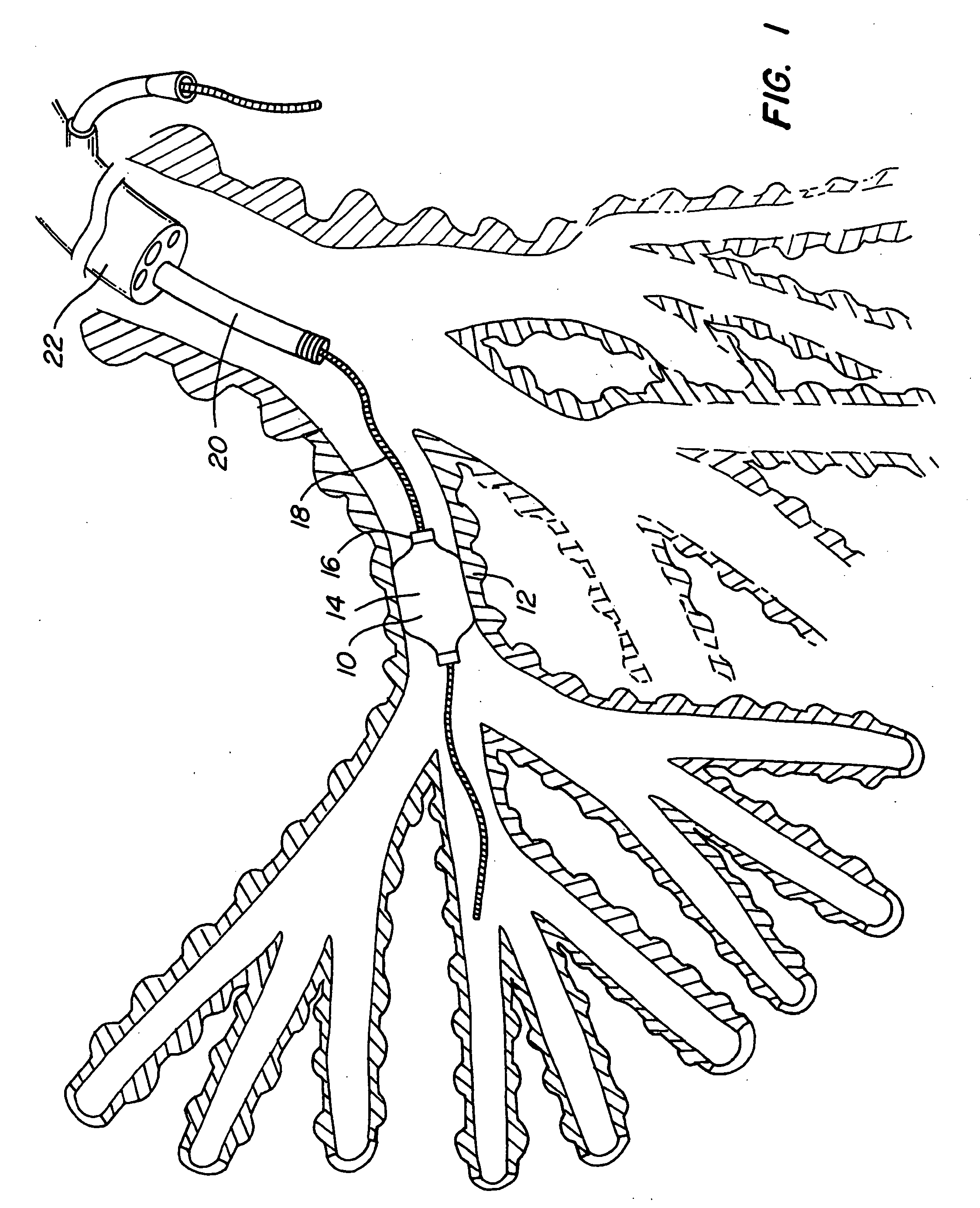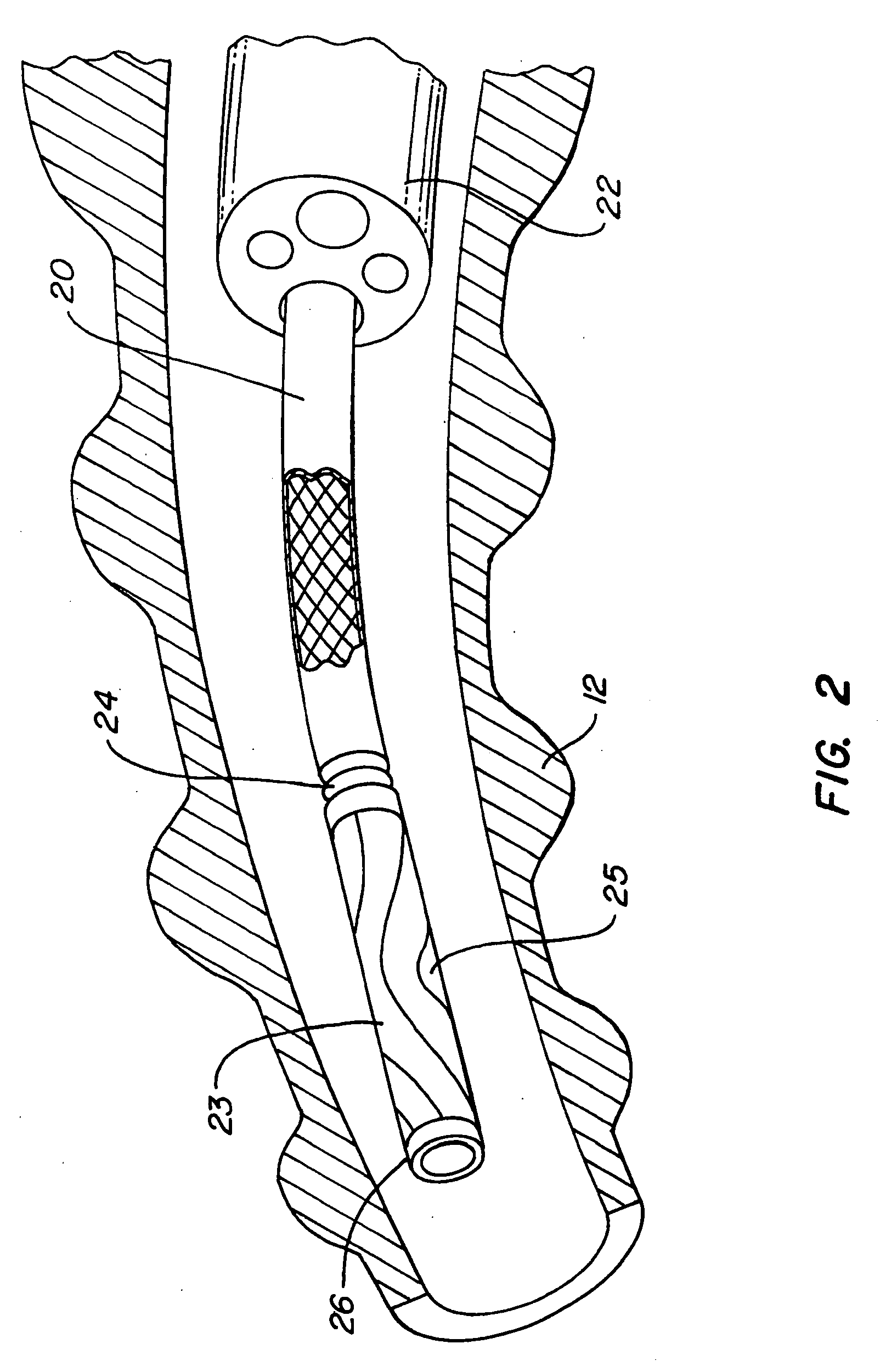Method of compressing a portion of a lung
a lung and compression technology, applied in the field of lung compression, can solve the problems of major airways not being suspended, major airways collapsing, affecting the effect of air flow,
- Summary
- Abstract
- Description
- Claims
- Application Information
AI Technical Summary
Benefits of technology
Problems solved by technology
Method used
Image
Examples
Embodiment Construction
[0052] The following tools may be used to treat COPD patients in a minimally invasive manner: Imaging and embolic devices to block blood flow through the target lung tissue; devices to help prepare the lung for devices and agents; a side wire delivery system that is advanced alongside the bronchoscope to guide and release several implants without removing the scope; a lung volume reduction implant device (Intra-Bronchial Device or IBD) that is controllably coupled to a delivery catheter that includes a working channel that runs through the center of the catheter and the implant; an inflator catheter that fits down the middle of the IBD and delivery catheter to inflate the IBD; an IBD plug element and delivery system; a deflation device to reposition or remove the IBD; a collateral flow detecting device; collateral flow blocking agents; adhesion promoting agents to maintain atelectasis; and a lung tissue compressing system. These items provide a reliable minimally invasive procedure ...
PUM
 Login to View More
Login to View More Abstract
Description
Claims
Application Information
 Login to View More
Login to View More - R&D
- Intellectual Property
- Life Sciences
- Materials
- Tech Scout
- Unparalleled Data Quality
- Higher Quality Content
- 60% Fewer Hallucinations
Browse by: Latest US Patents, China's latest patents, Technical Efficacy Thesaurus, Application Domain, Technology Topic, Popular Technical Reports.
© 2025 PatSnap. All rights reserved.Legal|Privacy policy|Modern Slavery Act Transparency Statement|Sitemap|About US| Contact US: help@patsnap.com



